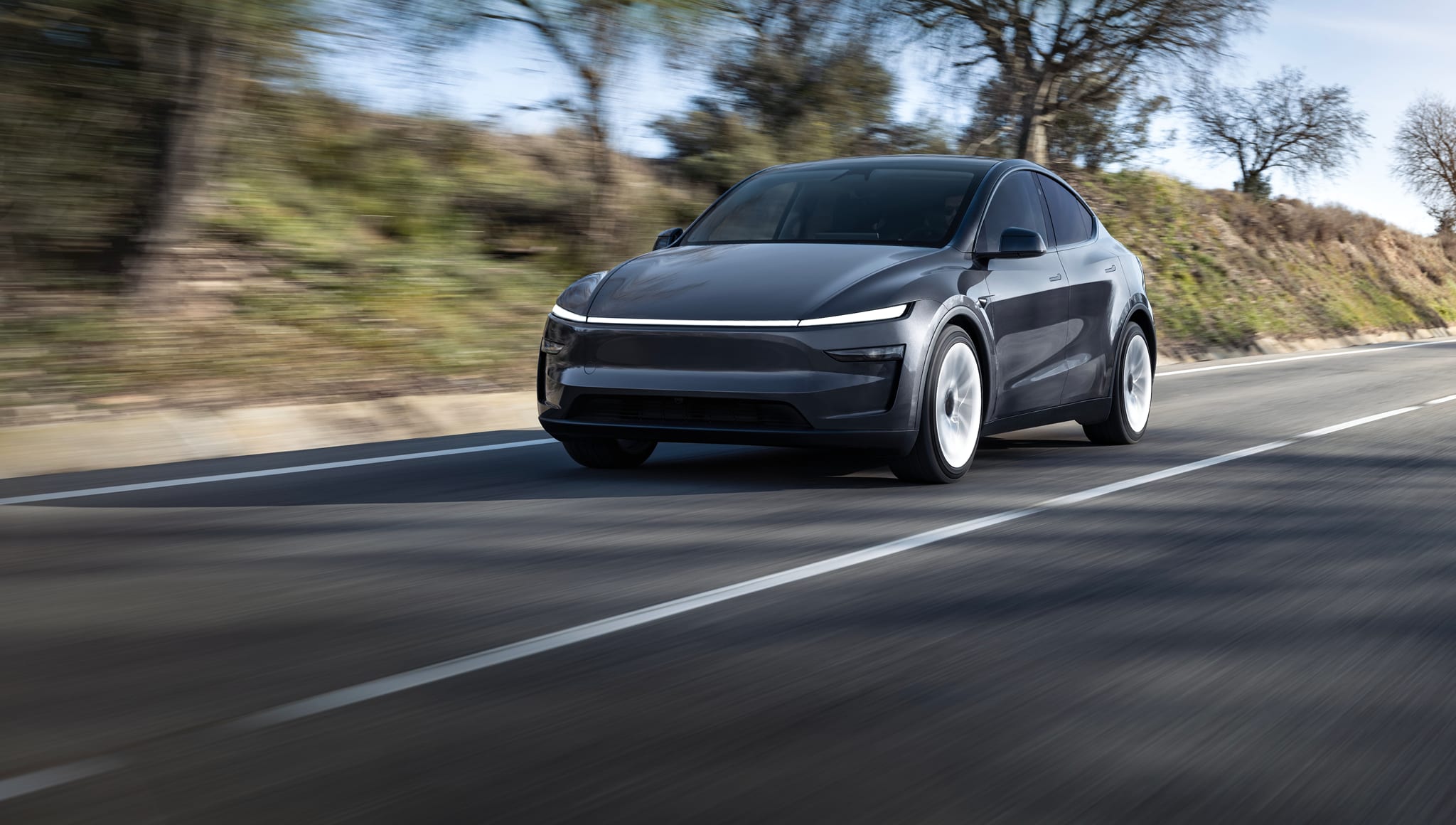
Tesla Reclaims Top Spot in South Korea's Import Market After Model Y Sales Surge to 7,357 Units in July
Tesla's Korean Renaissance: When Supply Strategy Meets Market Reality
SEOUL, South Korea — In the gleaming showrooms of Gangnam District, where Tesla's Model Y now commands premium positioning among luxury imports, July's sales surge represents more than statistical recovery—it signals a complex recalibration of global electric vehicle dynamics in one of Asia's most sophisticated automotive markets.
Tesla's reclamation of South Korea's imported vehicle throne, capturing 7,357 units and a commanding 27% market share in July, emerges from a confluence of strategic supply management, product refresh timing, and regional market dynamics that extend far beyond simple demand recovery. The Korean surge, driven overwhelmingly by the refreshed Model Y's 6,559 units, illuminates both the company's tactical agility and the persistent volatility underlying its global positioning.
The numbers tell a compelling story of market timing: imported passenger car registrations surged 23.3% year-over-year to 27,090 units, with Tesla's dominance restored through what industry analysts characterize as a precisely orchestrated supply release coinciding with peak consumer interest in the Shanghai-built "Juniper" Model Y configuration.

The Geography of Recovery
Tesla's global trajectory following the political turbulence surrounding Elon Musk's alignment with Donald Trump reveals a strikingly regional pattern of brand resilience and vulnerability. While Continental European markets continue experiencing what one automotive strategist described as "sustained brand fatigue," pockets of recovery demonstrate the complex interplay between local market conditions and global brand perception.
The United Kingdom emerged as an early recovery indicator, with Tesla climbing back to 19% of the electric vehicle market share by February 2025, ascending from a mere 5% in prior months. This resurrection coincided with tax policy changes that created artificial urgency among British consumers, suggesting that fiscal engineering can temporarily override brand skepticism.
Norway's experience proves even more instructive. July registrations for the Model Y increased four-fold following the introduction of zero-percent interest financing—a stark reminder that monetary policy, not just product appeal, drives consumer behavior in mature electric vehicle markets.
The American market presents a more nuanced picture. Brand loyalty, which had cratered to 50% in March amid political backlash, has recovered modestly to 57% by May. Yet this stabilization remains fragile, occurring against a backdrop of intensifying domestic competition from Ford and General Motors' electric offerings.
Supply Chain as Strategic Weapon
Korea's July surge illuminates Tesla's sophisticated approach to supply chain management as a market positioning tool. The timing of the Shanghai-built Juniper Model Y's arrival—featuring updated interior components and advanced hardware configurations—suggests calculated inventory management designed to maximize both volume and average selling prices.
With Korean consumers paying approximately $58,000 to $60,000 for the Model Y Long Range and Performance variants that dominated July sales, Tesla achieved what automotive analysts term "margin optimization through scarcity management." The Korean market's tolerance for premium pricing, combined with limited availability of competing luxury electric vehicles, created ideal conditions for Tesla's tactical supply release.
This approach carries inherent risks. Local competitors Hyundai and Kia are preparing their Ioniq 7 and EV5 launches for the fourth quarter, while Chinese manufacturer BYD has established Korean market presence and actively lobbies for reduced import duties. Additionally, Korean electric vehicle subsidies are scheduled to decrease 25% beginning January 1, 2026, creating temporal pressure on Tesla's pricing strategy.
The Autonomy Premium
Tesla's current valuation—trading at 100 to 110 times forward earnings—reflects investor expectations that extend far beyond traditional automotive metrics. The company's stock price of $309.26 represents what market analysts characterize as a "deep out-of-the-money call option" on autonomous driving technology rather than conventional automotive fundamentals.
Recent quarterly performance underscores this valuation tension. Second-quarter revenue of $22.5 billion, down 12% year-over-year, and earnings per share of $0.40 demonstrate the challenge of justifying premium multiples through current operational metrics. Automotive gross margins of 17.2% remain healthy by industry standards yet insufficient to support current equity valuations without revolutionary technological breakthroughs.
The approaching elimination of the $7,500 federal tax credit on September 30, 2025, creates additional pressure on Tesla's American operations. Industry projections suggest a 25% to 30% sequential decline in electric vehicle sales following the credit's expiration, potentially undermining Tesla's largest market during a critical period.
Political Economy of Brand Perception
The persistent regional variation in Tesla's recovery patterns reflects the complex intersection of brand identity and political sentiment in global markets. Continental European consumers, particularly in Germany and France, continue demonstrating what market researchers term "values-based purchasing resistance"—rejection of products associated with political positions contrary to local sentiment.
This phenomenon extends beyond simple consumer preference, influencing regulatory environments and government incentive structures. European Union discussions regarding Chinese electric vehicle subsidies could benefit Tesla's Berlin manufacturing operations, while potential rollbacks of American greenhouse gas regulations might paradoxically reduce Tesla's regulatory credit revenue—already down 51% year-over-year in the second quarter.
The Korean market's apparent insulation from political sentiment surrounding Musk's activities suggests that brand perception remains highly localized, influenced more by product characteristics and local market dynamics than global political associations.
Investment Implications and Market Positioning
For institutional investors navigating Tesla's volatile trajectory, the Korean recovery offers both tactical opportunities and strategic warnings. The likelihood of third-quarter earnings exceeding consensus expectations, driven by Korean sales and anticipated American pull-forward purchases before tax credit expiration, creates near-term trading opportunities.
However, fundamental analysis suggests caution regarding longer-term positioning. Without credible evidence of profitable autonomous vehicle deployment or successful mass-market model launches below $30,000, Tesla's premium valuation remains vulnerable to multiple compression.
Market strategists increasingly recommend paired positioning—underweighting Tesla while establishing long positions in electric vehicle supply chain companies including BYD, Hyundai, and CATL. This approach captures sector growth while hedging against Tesla-specific execution risks.
Key performance indicators for Tesla's future trajectory include 4680 battery cell manufacturing yields, the Red Wood model's bill-of-materials costs targeting sub-$25,000 production expenses, and full self-driving software adoption rates in newly penetrated markets including Korea and the United Kingdom.
The Seoul Signal
Korea's July surge ultimately demonstrates Tesla's enduring capacity to generate demand spikes when product offerings and supply timing align optimally. Yet this tactical success does not resolve fundamental questions regarding sustainable growth independent of policy support and regulatory advantages.
The Korean market's sophisticated consumer base and premium pricing tolerance create favorable conditions for Tesla's current strategy. However, increasing competition from both traditional manufacturers and Chinese electric vehicle producers threatens to erode these advantages as market dynamics normalize.
Tesla's ability to maintain market leadership will depend increasingly on technological differentiation rather than first-mover advantages. The company's substantial investments in autonomous driving technology and energy storage systems represent potential sources of sustainable competitive advantage, yet require successful commercialization to justify current valuations.
As global electric vehicle markets mature and regulatory support mechanisms evolve, Tesla faces the fundamental challenge of transitioning from growth story to sustainable profitability. Korea's July numbers provide encouraging evidence of tactical execution capability, while highlighting the persistent uncertainty surrounding the company's long-term strategic positioning in an increasingly competitive landscape.
Investment disclaimer: This analysis represents informed market commentary based on available data and established economic indicators. Past performance does not guarantee future results. Readers should consult qualified financial advisors for personalized investment guidance.